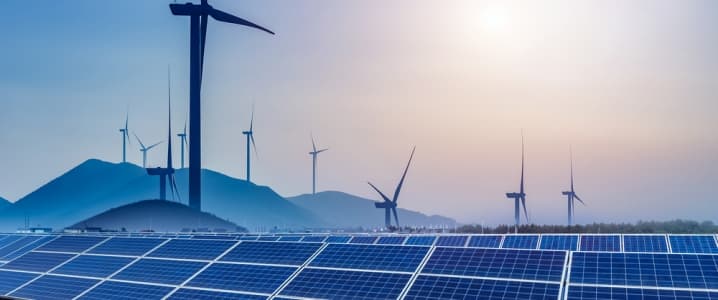Another rocky week for oil prices, with $4 per barrel swings in both WTI and Brent over the course of just a few days. While the United States eased up on the trade tariffs that it was set to levy on September 1, it leaned harder on Venezuela, this time sanctioning anyone who does business with PDVSA - even foreign companies that have assets in the US. In the meantime, crude oil inventories in the US rose this week, putting further downward pressure on oil prices.
Geology Rules the Day: Why The Guyana-Suriname Basin Is Ground Zero
Exxon’s made 13 discoveries offshore Guyana. Now, Tullow has followed suit with the much-anticipated results in from its Jethro-1 wildcat well in the Orinduik license.
It wasn’t until Exxon’s 13 discoveries that one was tempted to think that the age of discoveries was over, and the threat of peak oil was truly upon us. But geology is a tricky beast. The Guyana-Suriname Basin is full of stratigraphic traps, rather than faulted traps, and while the former have typically been more challenging to work with and have seen a lower commercial success rate, this is a live and learn situation that Exxon has now perfected, and which others are likely to follow suit--beyond Tullow.
Tullow Guyana drilled its Jethro-1 exploration well to 4,400 meters in 1,350 meters of water, encountering 55 meters of net oil pay. That’s more than Tullow forecast in its own predrill assessment. Tullow is now evaluating discovery data, but Jethro-1 is expected…
Another rocky week for oil prices, with $4 per barrel swings in both WTI and Brent over the course of just a few days. While the United States eased up on the trade tariffs that it was set to levy on September 1, it leaned harder on Venezuela, this time sanctioning anyone who does business with PDVSA - even foreign companies that have assets in the US. In the meantime, crude oil inventories in the US rose this week, putting further downward pressure on oil prices.
Geology Rules the Day: Why The Guyana-Suriname Basin Is Ground Zero
Exxon’s made 13 discoveries offshore Guyana. Now, Tullow has followed suit with the much-anticipated results in from its Jethro-1 wildcat well in the Orinduik license.
It wasn’t until Exxon’s 13 discoveries that one was tempted to think that the age of discoveries was over, and the threat of peak oil was truly upon us. But geology is a tricky beast. The Guyana-Suriname Basin is full of stratigraphic traps, rather than faulted traps, and while the former have typically been more challenging to work with and have seen a lower commercial success rate, this is a live and learn situation that Exxon has now perfected, and which others are likely to follow suit--beyond Tullow.
Tullow Guyana drilled its Jethro-1 exploration well to 4,400 meters in 1,350 meters of water, encountering 55 meters of net oil pay. That’s more than Tullow forecast in its own predrill assessment. Tullow is now evaluating discovery data, but Jethro-1 is expected to hold more than 100 million bbl.
This was a major de-risking for the Orinduik block, and Tullow is now likely to start drilling in the shallower prospect (Upper Tertiary Joe) in this same license. Tullow is the operator of Orinduik with a 60% stake.
In the meantime, Exxon is expected to start producing in Guyana from the Stabroek block next year, and now all eyes will swivel with anticipation to right across the maritime border here in Suriname, where most notably, Apache is gearing up to drill its first exploration well in Block 58 in September.
These are the emerging major discovery areas, and after a string of failures, the drillers now seem to have this tricky geology down.
Staatsolie announced a bond sale between $1 billion and $2 billion. The funds will be used to further develop its oil resources.
The Non-Existent Solar Empire of the World
In terms of building a renewable energy empire, SoftBank isn’t making much headway. As it turns out, it’s not nearly as easy as Japanese investor Masayoshi Son anticipated it would be. By 2030, SoftBank was hoping to have built massive solar capacity in Saudi Arabia and India. And massive would have been an understatement: SoftBank was eyeing solar capacity that would match 50% of the world’s entire existing capacity. Not much of this dream has actually made it to the contract phase.
Of the 220 gigawatts of solar capacity SoftBank was planning for Saudi Arabia and India by 2030, only 3 gigawatt has actually been contracted for India. Nothing has been contracted in Saudi Arabia. In India, the investment climate has taken a downturn with higher taxes and tariffs, as WSJ points out, and in Saudi Arabia, the most likely any such plans would have to wait for cash to turn up somewhere.
What it comes down to, though, is the million-dollar question that investors want to know: Is SoftBank real, or is it going to fail in a very big way and bring a lot of people down with it? The overall assessment from our sources in the region is that it’s not going to fail, but it’s also not going to thrive, necessarily. There are too many management issues here, including some that we understand could cause problems for the company with the Saudi Crown Prince on whom a fair amount of SoftBank’s solar empire plans rely.
Now, SoftBank is gearing up to launch its second Vision Fund, Vision Fund II, and is banking on a lot of hype to attract big investors. It will likely attract who it needs to attract because investors are coming around to this pioneering idea of investing in many rivals at the same time (as Vision Fund has done with the ride-share companies).
But for now, a solar empire—it is definitely not.

















